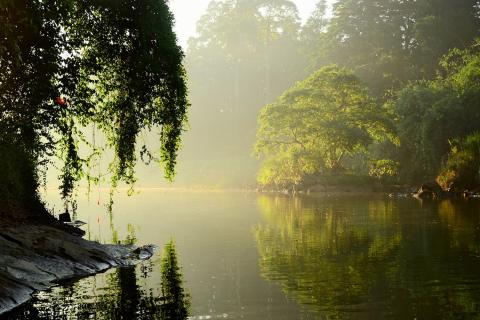Flood Plains National Park
Spanning the Mahaweli Ganga and situated between Wasgomuwa and Somawathiya Chaitiya National Park, the Flood Plains National Park is central to the integrity of the Mahaweli system of protected areas, both for its unique ‘villus’ and as a corridor for wildlife migration between grazing lands in both bordering protected areas. It is a great location for spotting a wide variety of resident and migratory waterfowl bird species.
The area was declared a national park in August of 1984, the same time as neighbouring Wasgomuwa, and covers an area of around 17,350 hectares. The floodplains which dominate the park provide the rich alluvial soil that flanks the Mahaweli Ganga and they are characterised by numerous shallow marshy depressions called villus. The prolonged periods of flooding in these low-lying areas are responsible for the exceptionally high level of primary productivity found here, with species such as water lettuce, kumbuk and rattan cane just some of many to be found here.
The rich vegetation in the villus attracts large numbers of grazing animals and birds, supporting a higher annual biomass than any other type of habitat within the Mahaweli Development Project area. The floodplains are an important habitat for the Asian elephant as well as providing a corridor for the elephants of Wasgomuwa and Somawathiya Chaitiya to move between the two parks. Fishing, jungle and rusty-spotted cats and wild boar are also present, along with water buffalo and many species of deer. For reptile lovers, the villus supports a large population of herpetofauna including natricine water snakes and mugger and estuarine crocodiles.
The floodplains here are particularly important, however, for the diversity and abundance of their avifauna and particularly migrant birds. It is estimated that around 75 migrant species spend their winter in the marshes of the national park with the marsh sandpiper, Asiatic golden plover, osprey and painted stork among others commonly seen.

